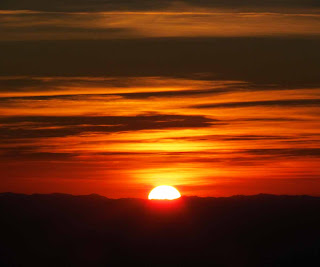During my research, thanks to a referral from one of my blog followers, I found out about Kitt Peak National Observatory. Since they have lost a lot of their federal funding, each night as not only a fund raiser, but as a sincere effort to share their technology and understanding with the public, they initiated a nightly observatory program. On Sunday night, I decided to participate. It costs $48 per person, but that includes a box dinner. The program started at 4:45pm and did not end until 9:30.
Back in the late 1950s, it was decided that we need a national observatory for the United States. The first task was to select the location. Because of the more favorable weather, several mountain peaks in the southwest were considered. It was decided that Kitt Peak, located 45 miles west of Tucson in the Quinlin Mountains, would be the perfect place – except for one thing: the mountain is owned and sacred to the Tohono O’adham Nation.
Negotiations took place and the Native Americans finally agreed to lease the land. Construction began in 1958 and the first telescope was installed. Today there are over 25 different telescopes nestled on top of this rugged mountain. The visitor's center was built in 1964 allowing tens of thousands of visitors per year to learn about astronomy. The mission of the visitor's center is to inspire a sense of wonder and awe about the Universe, through exhibits, tours, and public programs. The Nightly Observing Program is one.
From our campground in the Tucson Mountain Park, I headed west down Aho Way. As soon as I turned west, I figured that the mountains that I could see housed the National Observatory. In Photoshop I zoomed in and spotted one of the telescope domes. Notice the arrow below.
I am driving the RV, so I was nervous about driving 12 miles up to a peak that is nearly 7,000 foot tall -- but I did it.
Here is the view of the peak from the access road.
I stopped in a pull out half way up the mountain to get a few shots.
In the parking lot is a decorated mirror from one of the telescopes.
There are 23 different universities and groups that operate equipment on Kitt Peak. Some of them operate their telescope remotely, such as one that is in Florida and works from there.
This is a shot of the visitor's center.
In the visitor's center is this awesome meteorite that was recovered in Argentina. Scientists believe that this meteorite hit earth a few thousand years ago.
Outside the visitor's center is a display with this Native American artifact.
Here are a couple of shots from the top of the mountain looking out over the valley floor.
After orientation and dinner, they walked our group of 42 up to the west side of the mountain to watch sunset. Wow.


















No comments:
Post a Comment